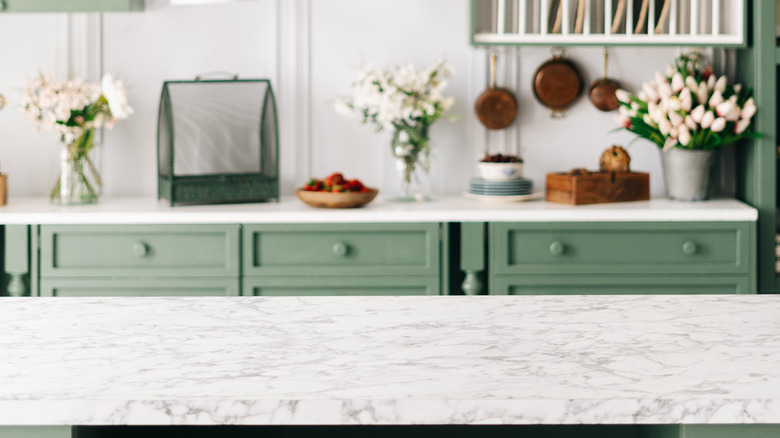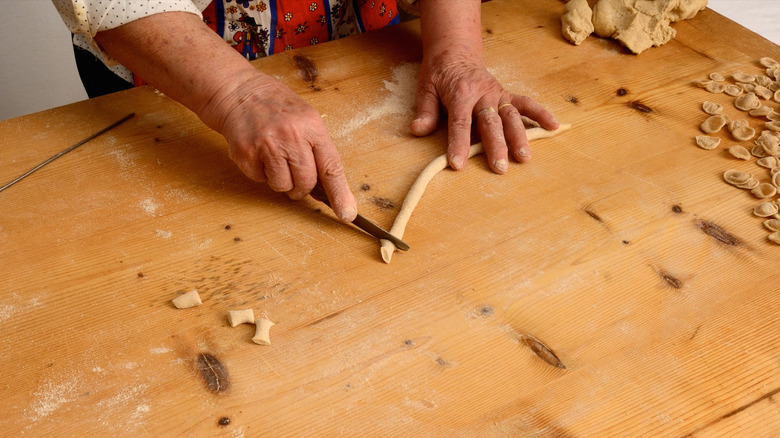How Your Countertop Is Making Homemade Pasta Difficult To Work With
Apart from being visually appealing, kitchen countertops serve a multitude of purposes. Pastry makers will note that stone countertops are great for working fatty doughs because of the stone's cold temperature. Stainless steel countertops are easy to clean, while sealed wood countertops are fantastic for general food prep. However, there is one type of food that countertops of any variety do not lend themselves well to making, and that's fresh pasta.
Though decidedly easier to work with than pastry, pasta dough has its own finicky nature nonetheless — a lot depends on the amount of egg or water you use. Equally important is the work surface on which you knead the dough, so if you plan on using your smooth countertop for this, you're going to run into some difficulties.
When you work with pasta, your aim is to get a smooth, round, well-worked ball of dough. To do this, you need to be able to pull the dough so that it is able to stretch and fold into itself. For that to occur, you need a surface that is rough and porous to absorb moisture and stretch the dough, so granite or stainless steel is out of the question. The best type of surface for creating perfectly pulled pasta is untreated wood, aka a pastry board.
A smooth countertop doesn't allow you to properly pull and stretch your pasta dough
If you've ever had the pleasure of watching Pasta Grannies via Youtube, you might have noticed that they all have one thing in common (besides being Italian, that is). Everyone uses a wooden pastry board to work and roll out their pasta dough — and for good reason. Unfinished wood does, in fact, provide a unique consistency to your fresh pasta that a granite countertop couldn't.
Per qb Cucina, the unfinished surface of the wood brings in a certain "warmth" and "grain" that affects the overall texture of your dough, helping it pull together into a smooth, cohesive ball. Wood also happens to have a more even temperature than marble or stainless steel, both of which are subject to potential drastic temperature fluctuations.
You may wonder why you can't simply use regular wood countertops or cutting boards? The wood used in either case may be treated with food-safe sealant, meaning that the surface is smooth and the pores are closed. They're also subject to the essences of other ingredients, which can trap themselves in the scrapes left by knives. Working pasta on these will result in an awkward flavor. So, take the advice of Italian nonnas who have been making pasta for decades and use a big block of unfinished wood for the best results.

